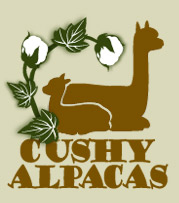Provisions. Alpacas are non-aggressive animals that do not “challenge” fences like other types of livestock. Fencing should be designed more toward keeping predators out than keeping the alpacas in. Alpacas need basic shelter and protection from heat and foul weather, and being livestock, they do require certain vaccinations and anti-parasitic medicines. Additionally, their toe nails need to be trimmed every couple of months and the fleece sheared off once a year. Alpacas are “earth-friendly” and cause minimal stress on their pastures. They have padded feet and graze in an efficient and non-destructive manner. They graze the grass down evenly but do not destroy the root system.
Alpacas are small and relatively easy livestock to maintain. They stand about 36” tall at the withers (the point where the neck and spine come together), weigh between 100 and 200 pounds, and establish communal dung piles that are easy to manage.
Feed for Alpacas. The main thing alpacas eat is grass and hay. Alpacas eat approximately 2 pounds of grass or hay per 125 pounds of body weight per day. A single, 60-pound bale of hay can generally feed a group of about 10 alpacas for about 2 days. Additionally, an alpaca pellet or chow is usually fed at the rate of 1 to 1-1/2 cups per alpaca per day. Free-choice minerals and plenty of fresh water to drink should be available at all times.
Manure Management. Communal dung piles make for easy cleanup of the pastures, and better hygiene in the herd. The dung is low-odor and an environmentally friendly product that can be sold to nurseries and at fairs and garden shows.
